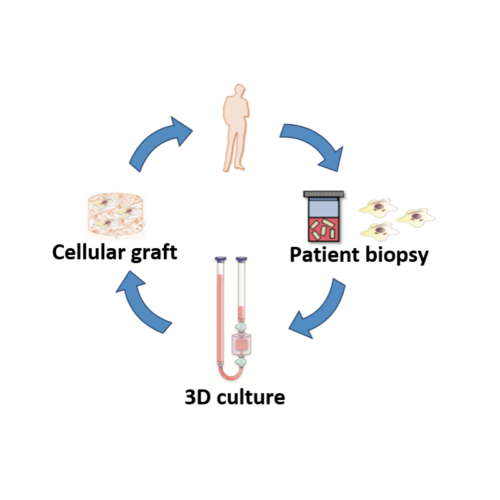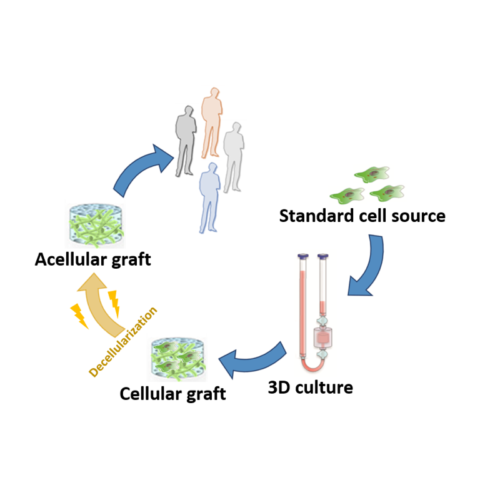Tissue engineering: the paradigm shift

The classical tissue engineering paradigm aims at replacing damaged tissues through the ex vivo generation of cellular grafts, with properties approaching the target tissue. To this end, cells are typically isolated from a patient and cultured in 3D conditions. The resulting graft is then subsequently transplanted back into the patient.

However, a more attractive paradigm consists in the exploitation of cell lines, offering an unlimited supply and standard properties. Following the graft generation, the immunogenic cellular material is removed by a decellularization step. As such, the absence of cells in the final construct make it transplantable in any indivudals without immuno-compatibility issues. This strategy represents a paradigm shift, since now the repair is solely instructed by the remaining extracellular matrix and embedded cytokines.
Design of dedicated cell lines, producing factors identified in Aim1

Our lab targets the generation of mesenchymal stromal lines expressing key factors involved in skeletal formation/regeneration. Cell-free grafts of particular molecular content are subsequently engineered. The design of grafts with optimized composition is expected to result in the successful regeneration of skeletal tissues.
Supporting litterature
• Bourgine et al., Biomaterials 2013.
• Bourgine et al., Stem Cell Research 2014.
• Bourgine et al., Advanced Functional Materials 2017.
• Haumer, Bourgine et al., Advanced Drug Delivery Review 2018.

